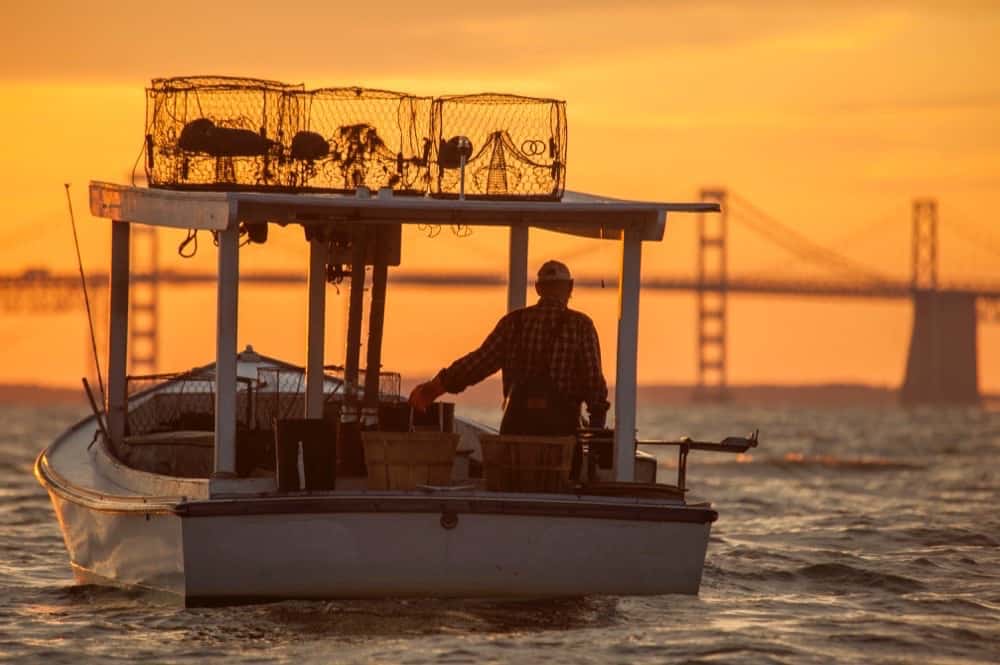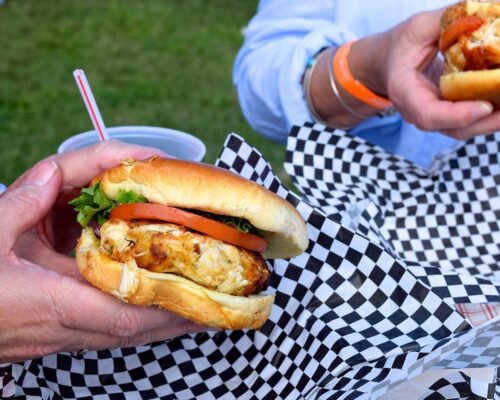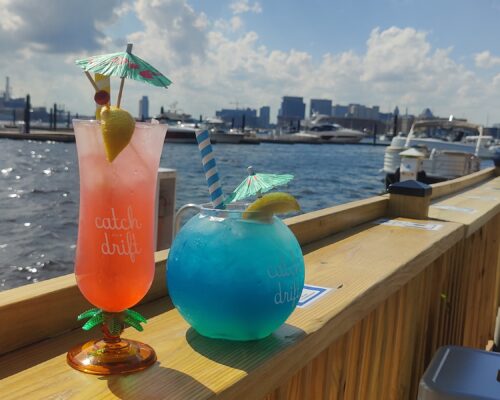50 years in the Chesapeake’s fisheries
By Kate Livie
Much of the Chesapeake’s powerful charm comes from its air of timelessness. Deadrises leave their slips before sunrise, catching crabs the way the last generation did, and the generations before that. Skipjacks, mud frozen to their winter decks, come into dock weighed down by the heft of hundreds upon hundreds of oysters to be shucked, packed, and shipped.
Yet these seemingly unchanged cultural touchstones are deceptive. The last 50 years have spelled tremendous transformation for the Chesapeake’s iconic fisheries. That so much remains of the Bay’s traditional ways speaks to the grit, determined stewardship, and conservation efforts of the people who call this place home.
The 1970s was in many ways the last of a golden era for Bay fisheries, begun when 20th-century fisheries diversified and the industry boomed. Watermen returning from World War II had come back to a bountiful Bay. The oyster bars were replenished and tributaries were clear, with vast eelgrass meadows that sheltered a plentiful supply of crabs. The oystering outlook was so rosy that new skipjacks were commissioned: Lady Katie, Rosie Parks, and other wooden working girls, all love letters to the Bay’s traditional fisheries.
After Hurricane Agnes sent a huge wall of mud and debris plummeting into the Chesapeake’s main stem in the late spring of 1972, billions of eggs from spawning fish were ejected from protective headwaters, sediment blanketed underwater grass beds, and more than half of the oysters north of the Bay Bridge were killed in the de-salinated water. It was the watershed’s watershed moment, and an event the maritime communities of the Chesapeake still talk about five decades later.
As the Chesapeake began to recover from Agnes, the foundation was being laid for another transformational event. As part of the popular Chesapeake seed initiative, where productive oyster spat was moved from thriving oyster regions to struggling ones, Virginia oysters had long been relocated to Maryland tributaries. But some of the Virginia oysters carried new diseases from outside the watershed—tiny hitchhikers from Louisiana and Delaware oysters, brought in from out of state in the late ’40s and ’50s.
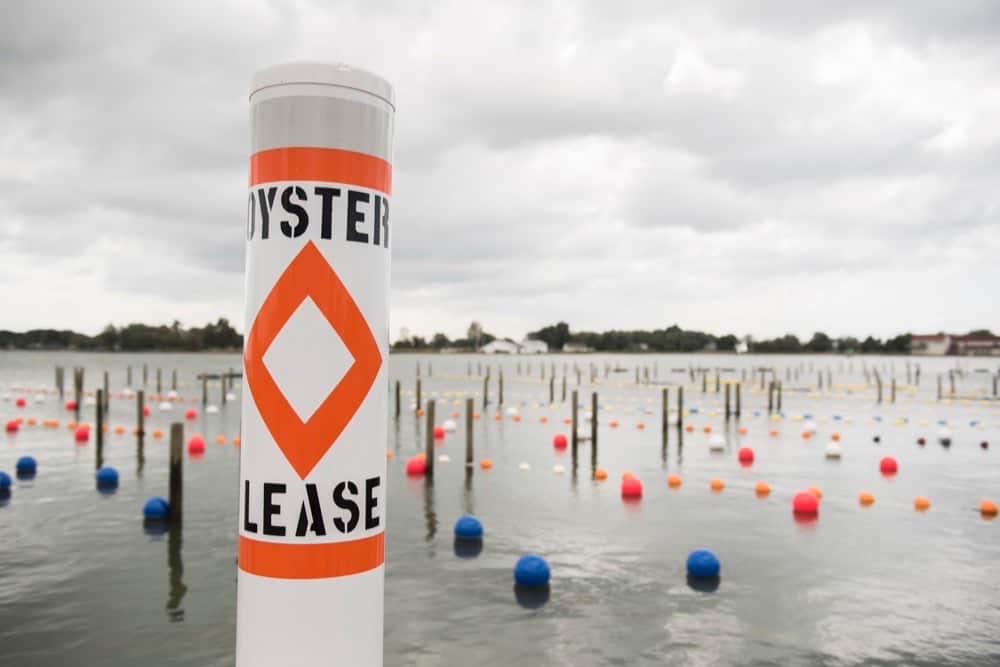
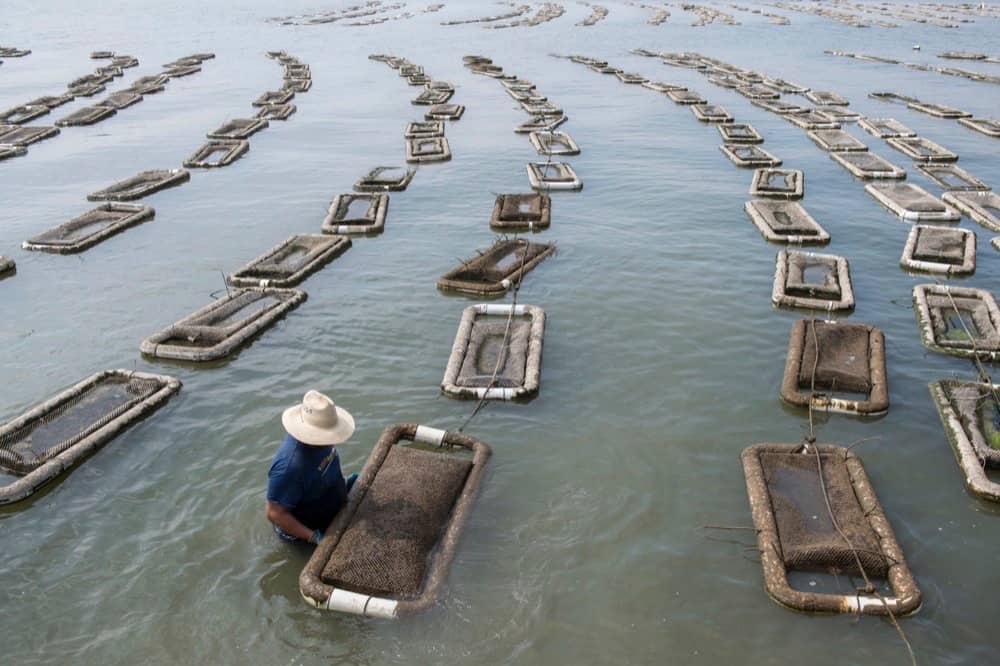
These two diseases, MSX and Dermo, spread from oyster to oyster in high-salinity waters. The first hit was in the ’50s and ’60s, as Virginia’s stocks were crippled by first Dermo, then MSX, plummeting from 40 million pounds per year to 20 million in a decade. Meanwhile, Maryland’s oyster seed program continued, moving infected oysters from Virginia north to Maryland, under the assumption that Maryland waters were too fresh for the disease to spread. That assumption would prove terribly wrong, but a decade would pass before the Maryland oyster industry felt its impact.
Although disease was eroding the Chesapeake’s once-legendary oyster populations, the ’80s was a heady time for the blue crab harvest. Approximately 9,000 watermen plied the Chesapeake’s summertime waterways in 1980, hauling in 62 million pounds of beautiful swimmers to meet the region’s insatiable clamor for crabs. Like oystering, crabbing was largely unchanged from the early 20th century, although wooden deadrises were more often built in fiberglass and pricey salted eel was replaced by razor clams for bait. Packing houses were still staffed by local, mostly Black laborers. Crisfield alone had 400 crab pickers—mostly African-American women—in 1980, making $1.15 for every pound of crabmeat they picked.
The importance of the fishery was conveyed in new scientific efforts to track and manage the crab population, which before then had tended to rise and fall in little-understood cycles. The first reporting of commercial crab landings started in 1981, with Virginia following over a decade later in 1993. It was an example of how the two states often differed on resource management such as crabs despite sharing the same Bay.
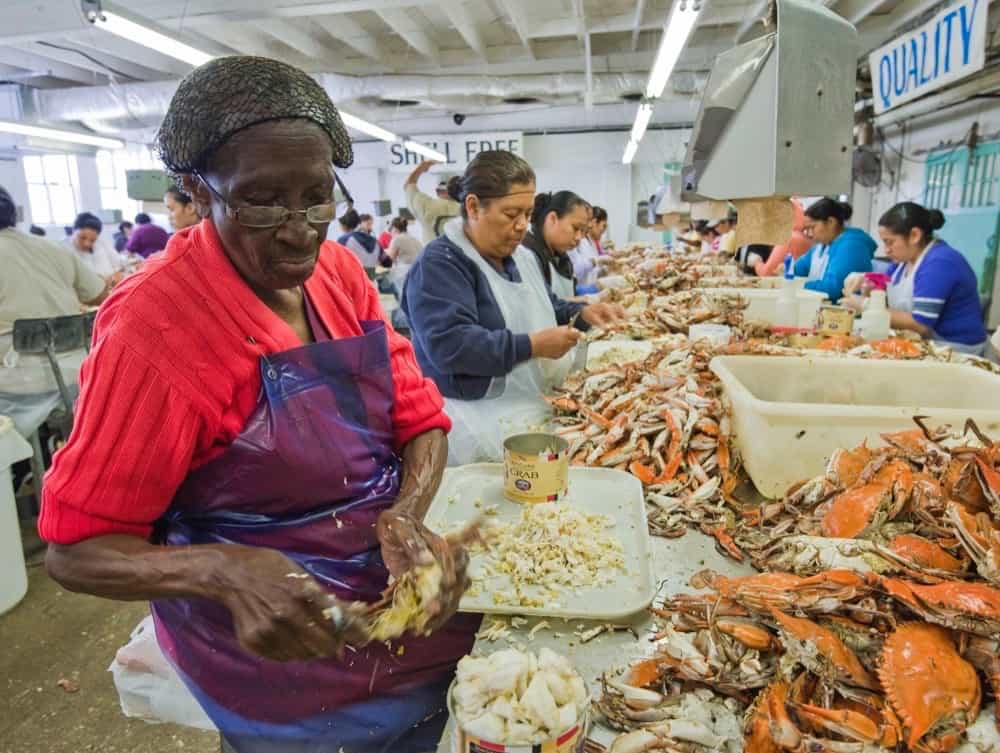
The creation of a Baywide crab survey in 1989 was remarkable, in light of this “I’ll go my way, you go yours” approach. In 1989, the Virginia Institute of Marine Science (VIMS) and the University of Maryland Chesapeake Biological Lab worked together to launch the survey. Using an old Virginia method for harvesting overwintering crabs, the surveyors used a special dredge to pull hibernating crabs up from the Bay’s bottom to be measured, counted, and thrown back. Working from December through March on locations throughout the Bay, the dredge survey provided a snapshot of the crab population’s health and its breeding stock.
Crabs eclipsed oysters as the Bay’s most valuable fishery by 1983. But even as crabbing grew in profit and importance, the labor force that powered it was ebbing away. As new generations benefited from increased access to education, seeking employment beyond the Bay’s waterways, the Chesapeake’s traditional packing houses were scrambling for pickers and laborers. The savior came in the form of a federal bill, the H2-B Guest Worker Program, which brought seasonal pickers from Mexico and Central America to the Chesapeake’s crab packing houses.
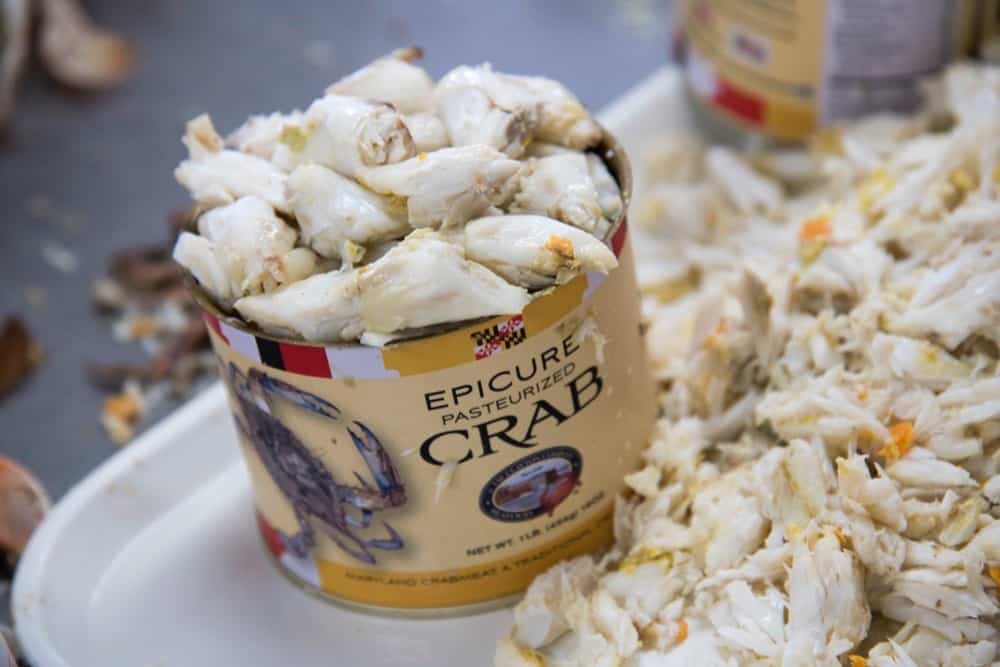
This new global worldview of the crabbing industry didn’t just extend to crab pickers. Phillips Seafood, which had grown from its early days as a Dorchester County venture to a state-wide crab juggernaut, began to look outside of the Chesapeake for plentiful crabmeat and cheaper labor. The Phillips family began scouting in Southeast Asia in the 1980s, and by the ’90s had established a new location in the Philippines to harvest, pick, and import the region’s pelagic swimming crabmeat. Demand boomed, though Phillips would come under fire for being less than transparent about the origins of the lump in their “Maryland-style” crabcakes. The gambit was so successful that throughout the ’90s Phillips would expand to Vietnam, China, India, Malaysia, Indonesia, and Ecuador, substantially undercutting the retail cost of Chesapeake crabmeat and transforming the market for the Bay’s crabs along the way.
Even as the crab industry experienced explosive global growth, the Chesapeake’s oyster industry foundered. Several years of drought in the late ’80s and early ’90s raised the Upper Chesapeake’s salinity levels, providing ideal conditions for the MSX and Dermo carried in the Virginia seed oysters to spread. As in Virginia, it proved catastrophic to Maryland’s oyster harvest. Maryland’s once-mighty annual fishery barely managed a million pounds a year—a drop of 95 percent from the golden era of the ’70s. Virginia’s fishery was equally devastated. The outlook of the fishery—and the watermen it supported—was bleak.
The solution championed by many in the oyster industry was one that had been used by maritime communities around the world to resuscitate oyster stocks decimated by disease: Introduce a non-native species. Bringing in an Asian oyster, watermen argued, would help the industry rebound. The Bay’s environmental groups were skeptical. Who knew what issues the introduction of a non-native oyster might cause in the Chesapeake? Especially when recent science had suggested that a healthy native oyster population could restore the Bay’s declining water quality.
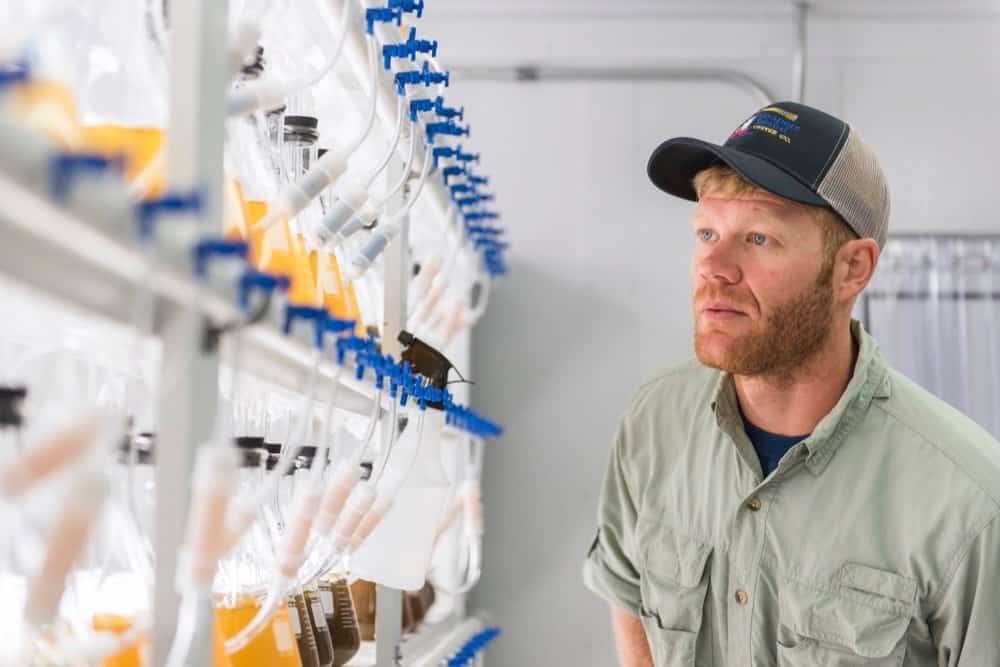
A scientist at VIMS, Stan Allen, was tasked with researching the issue in 1997. In his lab, he studied the possible introduction of an Asian oyster, attempting to determine if it could withstand the diseases plaguing the native species and potentially save the fishery. What he discovered along the way was that the Bay’s oysters—not a non-native oyster—could resist MSX and Dermo as long as the native oysters were sterile. His hatchery-created, “seedless watermelon” Eastern oyster with three chromosomes, known as a “triploid,” proved to be the solution the Chesapeake’s oyster industry needed. Almost overnight, triploids were embraced by Virginia’s oystering industry, which had long ago adopted aquaculture, first for oysters and later for cherrystone clams. Virginia’s oyster farmers set to raising hatchery triploids in force.
The triploid oyster provided less immediate relief for Maryland. The state had rejected large-scale aquaculture in the early 20th century, favoring the use of antiquated harvesting methods like dredging under sail to manage the fishery. There was simply no precedent. In the hopes of saving the oyster industry and restoring oyster habitat in one fell swoop, Maryland’s then-governor Martin O’Malley announced a new plan in 2009 to legally pave the way for Maryland oyster farmers. The bill simultaneously closed 25 percent of Maryland’s most historically productive oyster beds to wild harvest, designating oyster sanctuaries where reefs would be created to encourage spat, oyster growth, and the bivalve’s natural water-filtering power.
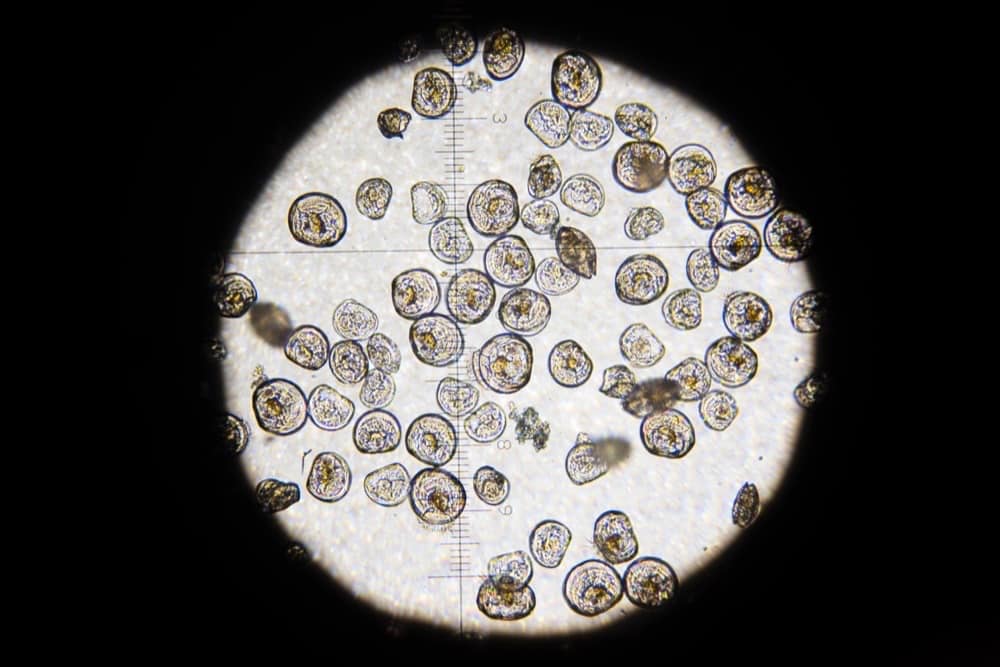
The 21st century development of the Chesapeake’s oyster aquaculture industry created a new Bay stakeholder, practically overnight. The establishment of new oyster farms and a new industry led to conflict. Oyster farmers and watermen navigated issues over leasing rights to the Bay’s bottom and tussled over the literal entanglement of gear. Some landowners didn’t appreciate the hundreds of floating or bottom oyster cages that became part of their waterfront vistas. And crabbers complained about their crab pots being snagged on the jagged, newly-built oyster reefs within the Maryland sanctuaries.
But it also created a new oyster fishery, one that supplied top-tier raw bars with oysters on the half shell, employing a new kind of Chesapeake oysterman.
From oyster disease to the development of oyster aquaculture, from mostly-local crab to a globalized industry, the Chesapeake’s two biggest fisheries have adapted and thrived. The crab harvest is remarkably well-managed and resilient, and breakthroughs in science have provided a greater understanding of the ebb and flow of their populations. Though the Bay’s wild oyster populations continue to struggle, oyster aquaculture has diversified the industry while sanctuaries provide an opportunity to explore the environmental power of a robust oyster reef.
There are still challenges—to the labor struggles of the crab industry and their access to migrant workers, to the wild oyster populations, which continue to decline—but the Chesapeake’s centuries-old traditional fisheries remain. Their skipjacks and oyster cages, draketails and trotlines define our sense of place on the Bay.
What the next 50 years will bring is unknowable, but one thing is certain—in this moment, they persist, in a beautiful tapestry of time, environment, culture and tradition. Oysters and crabs, a simple common language shared on the waterways and the dinner table. The lifeblood of us Chesapeake people.

